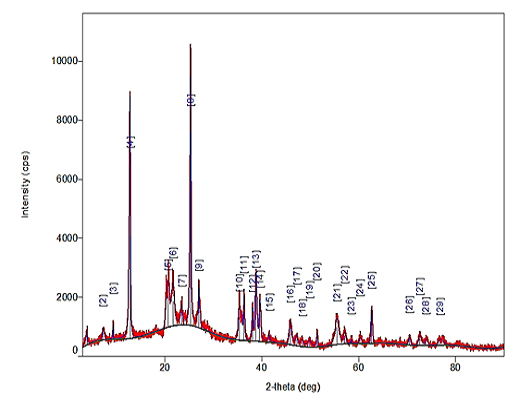Adsorption of Indigo Carmine Dye and Copper Ion by Kaolin from Bangka Island
Abstract
Indigo Carmine (IC) is a synthetic dye that might promote irritations, vomiting, and diarrhea when orally consumed in high concentrations. Copper is a dangerous heavy metal that tends to accumulate in organisms' cells as a pollutant. Hyperproduction of IC and accumulation of copper in water could cause an environmental problem that must be adequately addressed. Kaolin is found abundant on Bangka Island. Based on XRD analysis, Kaolin Island from Bangka Island consists of two important minerals, Kaolinite and Rectorite. Kaolin has chemical and physical properties, which make it useful in several applications, including as an adsorbent. This study aims to evaluate how Kaolin can adsorb copper ion from acid wastewater (pH < 0.5) and determine natural Kaolin's ability to adsorb IC dye from an aqueous solution. Many factors, including mixing time and number of doses of Kaolin, influence Kaolin's ability to absorb IC. The longer the stirring time, the more IC is absorbed. The optimal temperature for IC adsorption is 25˚C. The optimal kaolin dose for IC adsorption is 20% (m/v). Copper concentration after application of Kaolin tends to decrease, with optimal at 25.09% (m/v) dosage for 19.23% copper removal.
Downloads

Copyright (c) 2023 Candra Yulius Tahya, Melanie Cornelia, Tagor M. Siregar, Karnelasatri Karnelasatri

This work is licensed under a Creative Commons Attribution-NonCommercial-NoDerivatives 4.0 International License.
Authors who publish with this journal agree to the following terms:
- Copyright on any article is retained by the author(s).
- The author grants the journal, the right of first publication with the work simultaneously licensed under a Creative Commons Attribution License that allows others to share the work with an acknowledgment of the work’s authorship and initial publication in this journal.
- Authors are able to enter into separate, additional contractual arrangements for the non-exclusive distribution of the journal’s published version of the work (e.g., post it to an institutional repository or publish it in a book), with an acknowledgment of its initial publication in this journal.
- Authors are permitted and encouraged to post their work online (e.g., in institutional repositories or on their website) prior to and during the submission process, as it can lead to productive exchanges, as well as earlier and greater citation of published work.
- The article and any associated published material is distributed under the Creative Commons Attribution-NonCommercial-NoDerivatives 4.0 International License.





_copy1.png)










